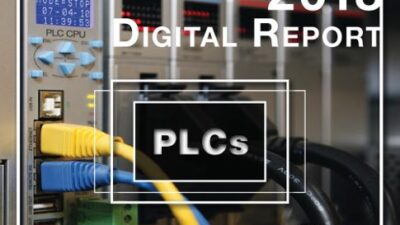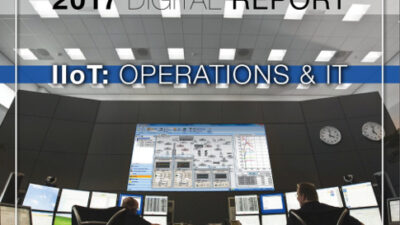Orlando, FL—“We’re going to delay rollout to ensure quality.” In a world primed on instant everything, it wasn’t surprising that some customers groaned a bit after Kevin Roach, vice president Rockwell Software, said that Rockwell Automation’s next Coordinated Product Release (CPR 9), expected this summer, won’t ship until October.
Orlando, FL —“We’re going to delay rollout to ensure quality.” In a world primed on instant everything, it wasn’t surprising that some customers groaned a bit after Kevin Roach, vice president Rockwell Software , said that Rockwell Automation ’s next Coordinated Product Release (CPR 9), expected this summer, won’t ship until October. Roach also previewed aspects of the software upgrade for Rockwell Automation’s FactoryTalk integrated suite of scalable, modular applications at the company’s recent 10th annual RSTechEd meeting here.
“Sooner is never better than solid,” Roach told the audience. “A million man hours is going into this, and the result will be really solid. We’re testing coverage, doing cable pulls, looking at impacts of noise and switches, looking at the determinism, impact of video files. We’re confident that CPR 9 will be a great release and more tolerant to the world in which it lives as a result of the extra time and effort,” he said. The same audience was highly receptive to the prospect of greater efficiencies from the next CPR upgrade, as it more tightly integrates with manufacturing operations and the supply chain. In numerous conference sessions enthusiastic users shared their stories, and savings, brought about by their implementations of Rockwell Automation software and hardware.
Roach told Control Engineering that key improvements are in robustness and stability, adding that with such an increase in code complexity, there’s a non-linear increase in the level of integration for the software suite. “Large blocks of code are almost impossible to test with all integrated applications. This will support large systems in a robust environment. In testing, we wanted to ensure real-world situations and OPC -UA compatible, he said, with more security and compatibility with third-party software included. It also will have greater functionality, including disaster recovery, version backups, device configuration management, Fieldbus Foundation and HART connectivity, condition-based monitoring, and auto-discover configuration, in a flatter overall architecture.
These kinds of features are needed, reminded Roach, since today’s manufacturing operations churn through data via process metrics, downtime, statistical quality control, asset tracking, performance measures, production data, operational data stores, and analytics, among others. Much of it goes into disparate databases in various forms, electronic and otherwise, often incompatible, and usually not reaching the right people at the right time for the best decisions.
The new OSIsoft , using PI System , the most popular data historian in the world, Roach says, to communicate over the backplane. The new software allows plug and play, point and click, and intelligent discovery.
In a few clicks, a demo showed how to create a new server, name it, test connections, create historical data collection interface, then integrate the software into other applications for data import and export. Open a project, add a trend object, give a name, select a data source, then search, select, save, drive trends, set a time interval, accept, and set ranges. Integrated reporting is easy to learn and use, enabling personalized analytics. The PI-based historian will be integrated into the FactoryTalk suite to save integration time and energy. Information also may be saved into a Microsoft Office 2007 report.
“Looking forward, what does this all mean? It creates transparency, a foundation for a richer information environment, allowing data discoveries, using information in context, drilling into overall equipment effectiveness (OEE), showing event details, making set points, looking at profiles, and observing how changes effect operations. A richer feature set will be available as we expand connectivity to third-party systems,” Roach said.
Future alliances and developments will include greater enterprise and vertical market application connectivity, with existing and legacy Rockwell systems, as well as to other vendors, he suggested. User feedback gathered at the June conference is now being incorporated into the software. “We’re pushing the visualization frontier,” Roach said, “closing the loop, integrating business and plant systems.” Platform independence also is under development.
In general, software is being designed with more modularization, so upgrades are easier. The company is working with Cisco , and others, to ensure a banking-level of security for manufacturing software. “In 2007, we’re pleased with the investments and payoffs,” Roach said, noting development challenges “as systems become infinitely more complex and variable.”
The existing SQL-based historian, introduced two years ago, will be supported as a “classic” version for those without higher-speed data collection requirements. All will be encouraged with an “extremely attractive upgrade path” to move to the new PI-based software, Roach said.
Rockwell Automation, Roach noted, is integrating the latest versions of Rockwell Software throughout its workflows, where applicable. “We are eating what we make, if you will.”
More from Rockwell Software: Whitepaper Download, “Metrics that Matter.”
Control Engineering also reported from RSTechEd: Benefits suggested with convergence of IT, controls. Think Again: Re-target your innovations
— Mark T. Hoske , editor in chief Control Engineering Daily News Desk


